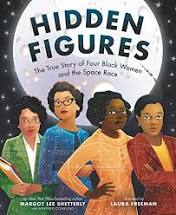 Hidden Figures
Hidden Figures
by Margot Lee Shetterly
High school students who enjoyed the 2016 blockbuster “Hidden Figures” can dive deeper into the true story of African-American women whose calculations helped launch NASA astronauts into space through Margot Lee Shetterly’s book of the same name. For younger students, there’s a young readers’ edition and a picture book version.
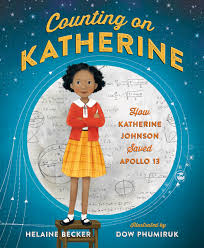 More books about Katherine Johnson
More books about Katherine Johnson
In addition to “Hidden Figures,” NASA mathematician and Presidential Medal of Freedom recipient Katherine Johnson is at the center of several other recent books. Those titles include her middle-grade autobiography, “Reaching for the Moon,” and two picture books, “Counting on Katherine” by Helaine Becker and Dow Phumiruk and “Counting the Stars” by Lesa Cline-Ransome and Raúl Colón.
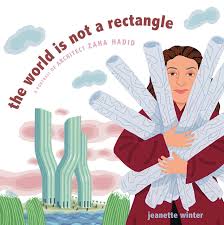 The World Is Not a Rectangle: A Portrait of Architect Zaha Hadid
The World Is Not a Rectangle: A Portrait of Architect Zaha Hadid
by Jeanette Winter
Rote learning can make math feel like it’s all about rules. Zaha Hadid’s life shows otherwise. The Iraqi-British architect designed opera houses, museums and bridges whose swirling structures and irregular shapes defied convention. Teachers and students can extend the learning by checking out real photos of Hadid’s work and mapping their locations around the world.
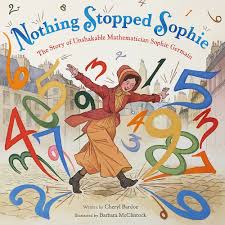 Nothing Stopped Sophie
Nothing Stopped Sophie
by Cheryl Bardoe and Barbara McClintock
A winner of the 2019 Mathical Book Prize, this picture book captures the life of Sophie Germain, a girl who grew up amid the French Revolution and found order and sense in math. Sophie dedicated her adult life to tackling big math problems, such as Fermat’s Last Theorem. McClintock’s marker, gouache and collage illustrations infuse the space around Sophie with vibrant numbers and equations, making the dynamic activity of her mind visible for readers.
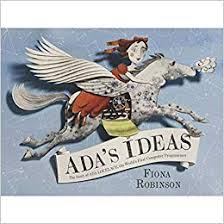 Ada Lovelace biographies
Ada Lovelace biographies
As coding increasingly makes its way into curricula, it’s important for students to see names beyond Steve Jobs and Bill Gates connected to the development of information technology. Ada Lovelace, for example, is credited with writing the first computer program. A recent spate of picture books celebrate that legacy. Titles include “Ada’s Ideas” by Fiona Robinson, “Ada Byron Lovelace and the Thinking Machine” by Laurie Wallmark and April Chu and “Ada Lovelace, Poet of Science” by Diane Stanley and Jessie Hartland.
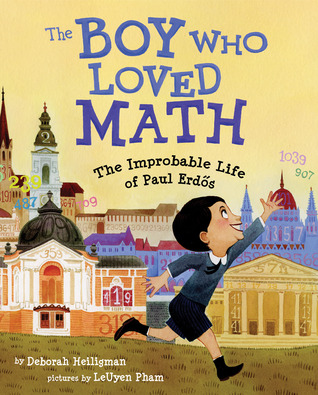 The Boy Who Loved Math: The Improbable Life of Paul Erdos
The Boy Who Loved Math: The Improbable Life of Paul Erdos
by Deborah Heiligman and LeUyen Pham
Young readers don’t need to understand Paul Erdos’ mathematical proofs to relate to his dislike for adult rules and his zeal for his favorite subject. Born in Hungary, Paul spent his life exploring and adoring numbers with friends all over the world. With equations, graphs, and number groups peppered throughout the artwork, this book’s illustration note provides avenues for extended learning about concepts such as harmonic primes and amicable numbers.
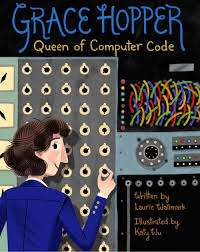 Grace Hopper: Queen of Computer Code
Grace Hopper: Queen of Computer Code
by Laurie Wallmark
This biography spotlights Grace Hopper — another forgotten female pioneer of computer science. You’ve heard of a software “bug,” but did you know the origin of the term? When one of the U.S. Navy’s early computers stopped working, Grace used a pocket mirror and her penchant for problem-solving to find the root of the trouble: a trapped moth, blocking a switch. She also developed a computer language that simplified programming and retired from the Navy as an admiral.
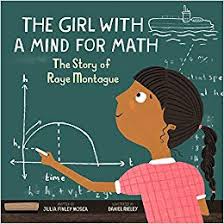 The Girl with a Mind for Math: The Story of Raye Montague
The Girl with a Mind for Math: The Story of Raye Montague
by Julia Finley Mosca and Daniel Rieley
Growing up in the segregated south, Raye Montague navigated racial and gender discrimination as she steered toward her dream of designing ships. Rhyming text shares Montagues early interest in math and how she taught herself engineering while working as a U.S. Navy typist. When a president ordered a ship design in an expedited time frame, Montague surprised her white male colleagues by completing the world’s first ship design by computer. She eventually became a registered engineer and the Navy’s first female program manager of ships.
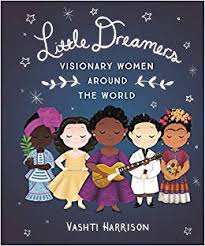 Little Dreamers: Visionary Women Around the World
Little Dreamers: Visionary Women Around the World
by Vashti Harrison
A collective biography for middle grade readers, this illustrated volume includes profiles on mathematicians Wang Zhenyi, Ada Lovelace and Grace Hopper. According to Marcie Flinchum Atkins, who is a school librarian in Fairfax County, Virginia, this book is ideal “for students who want to read just a small bit of information about a person” and for teachers who “want to do a short read aloud about one particular person that is featured.” Flinchum Atkins also recommends Harrison’s other collective biography, “Little Leaders: Bold Women in Black History,” which features Katherine Johnson among its 40 profiles.
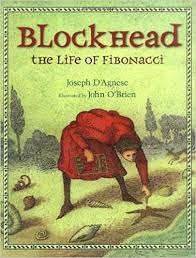 Blockhead: The Life of Fibonacci
Blockhead: The Life of Fibonacci
by Joseph D'Agnese and John O'Brien
As a traveling merchant in the 12th and 13th centuries, Leonardo Fibonacci learned and promoted mathematical ideas from across cultures, such as the Hindu-Arabic numeral system. With little known about his life, this biography crafts a fictional narrative around the facts about the number pattern that orders the natural world — now called the Fibonacci sequence. The final page includes prompts for children to explore the pattern in the book’s illustrations and with familiar objects.


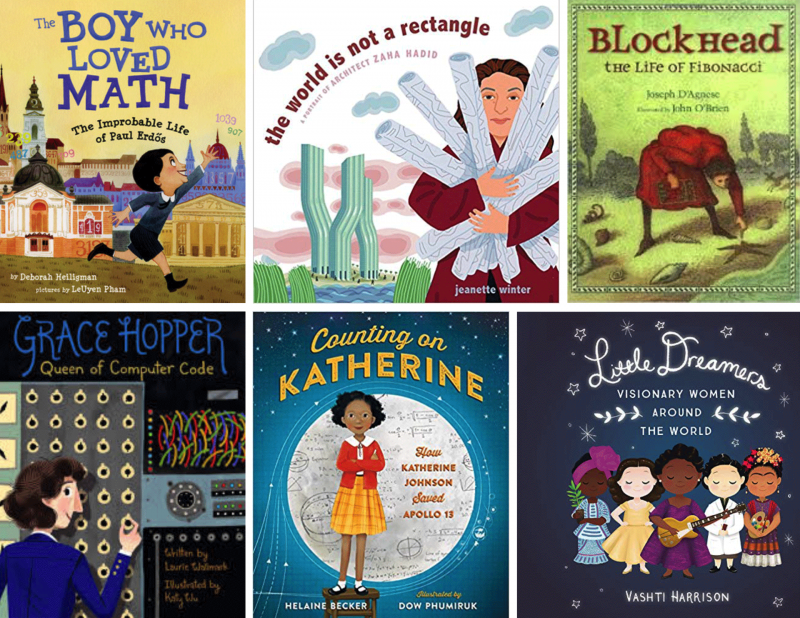
 Hidden Figures
Hidden Figures More books about Katherine Johnson
More books about Katherine Johnson The World Is Not a Rectangle: A Portrait of Architect Zaha Hadid
The World Is Not a Rectangle: A Portrait of Architect Zaha Hadid  Nothing Stopped Sophie
Nothing Stopped Sophie Ada Lovelace biographies
Ada Lovelace biographies
 Grace Hopper: Queen of Computer Code
Grace Hopper: Queen of Computer Code The Girl with a Mind for Math: The Story of Raye Montague
The Girl with a Mind for Math: The Story of Raye Montague Little Dreamers: Visionary Women Around the World
Little Dreamers: Visionary Women Around the World Blockhead: The Life of Fibonacci
Blockhead: The Life of Fibonacci